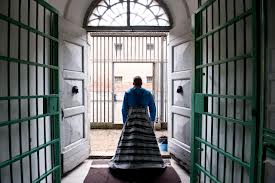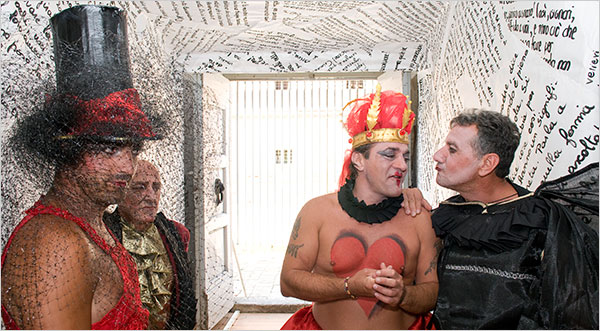Sean Dobbin, who teaches at the Community High School of Vermont in the Northeast Correctional Complex calls his class “Cruciverbalism.” And yep, that really refers to crossword puzzles. But Caleb, who’s been incarcerated for 10 months, says he’s learned more than how to solve and create puzzles through these classes. He’s learned speaking and language skills as well as what he calls how to “be the change.” Caleb says he is also helping others by “creating a superb environment in the English language that’s easy to understand.”

Pictured here is one student with a crossword he is solving.
Dobbin came to this class though his love of puzzles. He says he is always solving puzzles and has created crosswords for the likes of the NYTimes, two accepted via the master, Will Shortz. He’s spent much of his career teaching English and always worked with seriously at-risk or incarcerated teens. The current class has been running for 4-5 months and he has seen a significant improvement in vocabulary skills. But, most importantly, he has found a fun and inviting way into teaching language arts, keeping his students engaged and challenged.
To earn credit, he says, “a student must solve a set number of puzzles, create their own puzzles, contribute to a class puzzle that is being groomed for publication, keep a vocabulary journal, keep a parts-of-speech journal, and produce written work that is guided by ‘found’ knowledge from puzzles.” Dobbin says that the prison has invested in a professional program, Crossword Compiler, a crossword-construction software program used by pros.
David, at 29, recently earned his high school diploma in 2012 at the Community High School and took the Cruciverbalism class “to try something new.” He says the class taught him “If I am determined enough and stay focused that I can accomplish any and all goals I set for myself.” David now is the librarian at the prison complex.

Pictured here, another student, working on building a crossword puzzle.
Under Vermont state law, the Vermont DOC website states that “All individuals under the age of 23, under custody of the DOC, and without high school diplomas, have a mandatory education requirement. These students are enrolled upon admission.” The Community High School of Vermont is accredited through the New England Association of Schools and Colleges (NEASC).
But school behind bars can be deadly. Keeping the attention of kids is not easy and engaging them in class means helping them learn, as Caleb says, how really smart they are. David too says it well when discussing what Crosswords do for students: They “work your brain and help you learn things that you never knew before.”
Dobbin feels teachers at the high school are “encouraged (and expected) to be creative with the coursework they offer.” But seriously, without giving kids behind bars opportunities to shine, there will be no door like the one below –a way into, yes, but no way out of the darkness.









